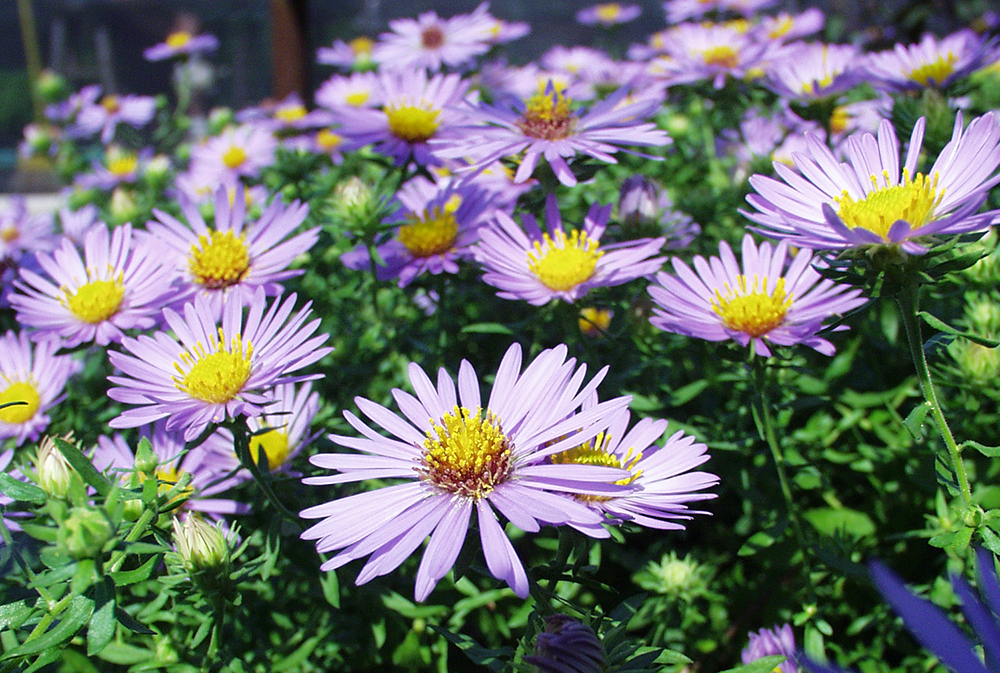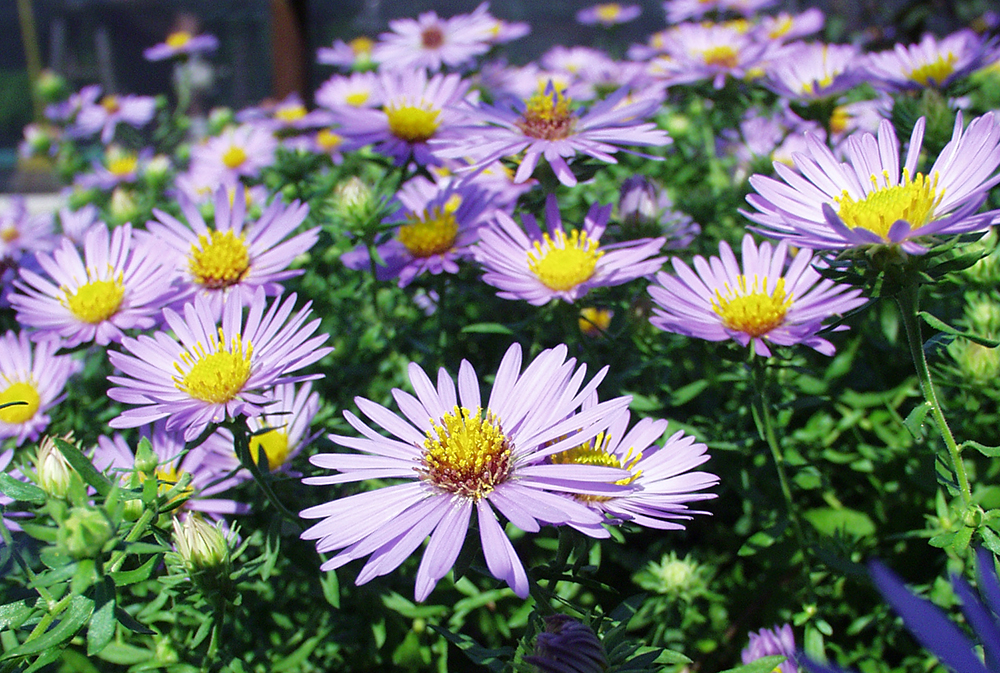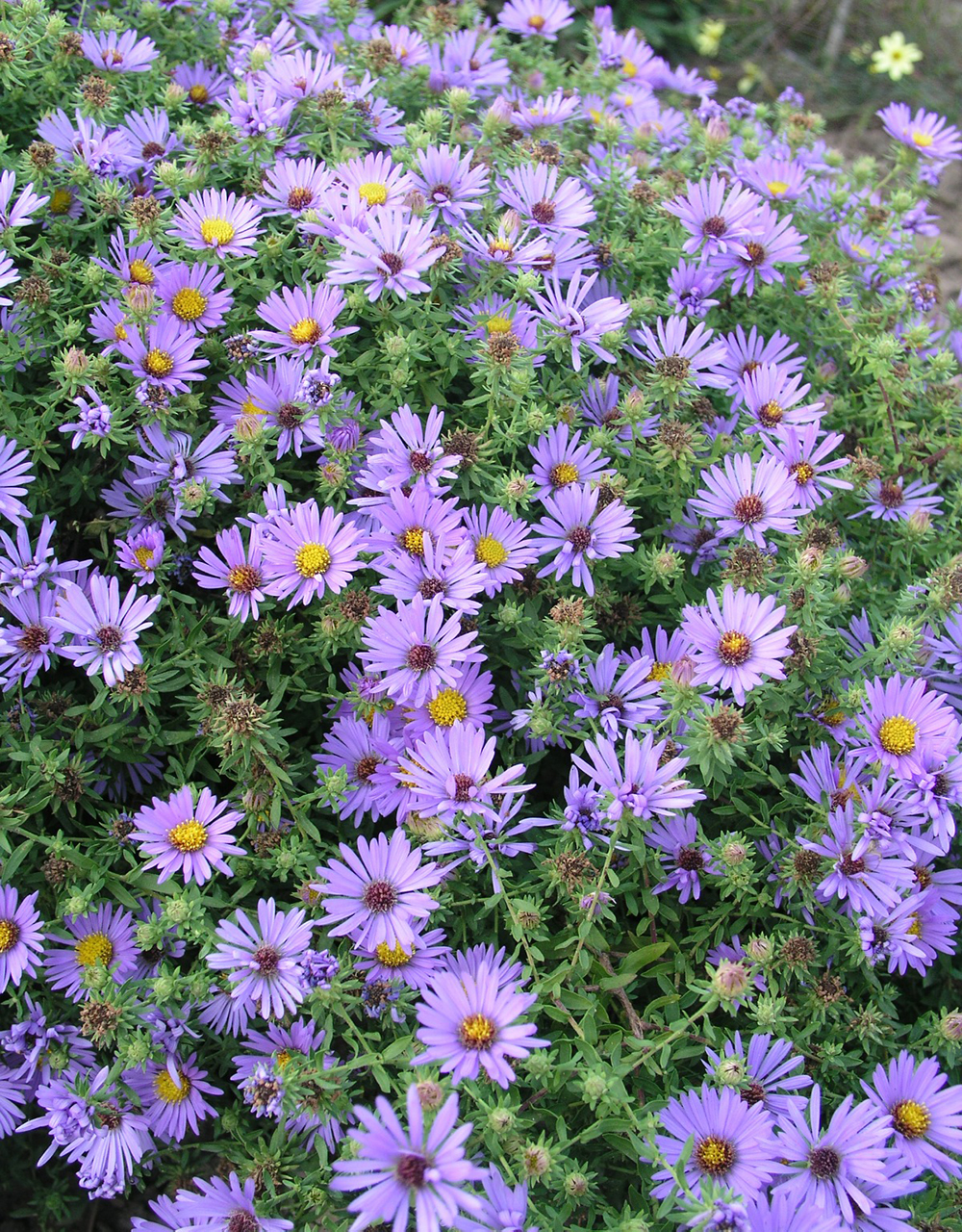Aster oblongifolius ‘October Skies’
(Syn. Symphyotrichum oblongifolium)
Aster-Aromatic
Aster oblongifolius ‘October Skies’
(Syn. Symphyotrichum oblongifolium)
Aster-Aromatic
Discovered by Primrose Path Nursery as a seedling of ‘Raydon’s Favorite’, this selection bears a profusion of 1” wide, sky blue flowers about 2 weeks earlier on shorter, mounded plants. A favorite of bees and a host for the Silvery Checkerspot butterfly. This adaptable species tolerates sand and clay, drought and high pH soils.
Plant Details
- Zone: 3 - 8
- Height: 15-18"
- Spread: 18-30"
- Exposure: Full Sun
- Soil Moisture: Low Water Needs, Moderate Water Needs
- Drought tolerant: Yes, Once Established
- Bloom time: Early Fall, Mid-Fall
- Foliage Color: Green Shades
- Flower Color: Blue Shades
- Fragrant: Yes
- Good Cut Flower: Yes
- Native: Nativar
- Deer resistant: Yes
- Rabbit resistant: No
- Bee-friendly: Yes
- Attracts butterflies: Yes
- Attracts hummingbirds: No
- Groundcover: No
- Roy Diblik Favorite: No
Plant Details
- Zone: 3 - 8
- Height: 15-18"
- Spread: 18-30"
- Exposure: Full Sun
- Soil Moisture: Low Water Needs, Moderate Water Needs
- Drought tolerant: Yes, Once Established
- Bloom time: Early Fall, Mid-Fall
- Foliage Color: Green Shades
- Flower Color: Blue Shades
- Fragrant: Yes
- Good Cut Flower: Yes
- Native: Nativar
- Bee-friendly: Yes
- Deer resistant: Yes
- Rabbit resistant: No
- Attracts butterflies: Yes
- Attracts hummingbirds: No
- Groundcover: No
- Roy Diblik Favorite: No
Grower Information
Plant your Aster crop in spring for late summer and fall sales opportunities along with Rudbeckia, Eupatorium, Vernonia and fall grasses. Asters are heavy feeders, but it is best to discontinue feeding once they begin to bloom. Pinching is beneficial to promote lateral branching.
- PowerPlug Size(s): 32s
- Optimal Planting Time: Spring
- Retail Sales Window: Fall, Spring
- Moisture in Production: Average
- Requires Shade in Production: No
- Vernalization Required for Bloom: No
- Vernalization Beneficial: Yes



